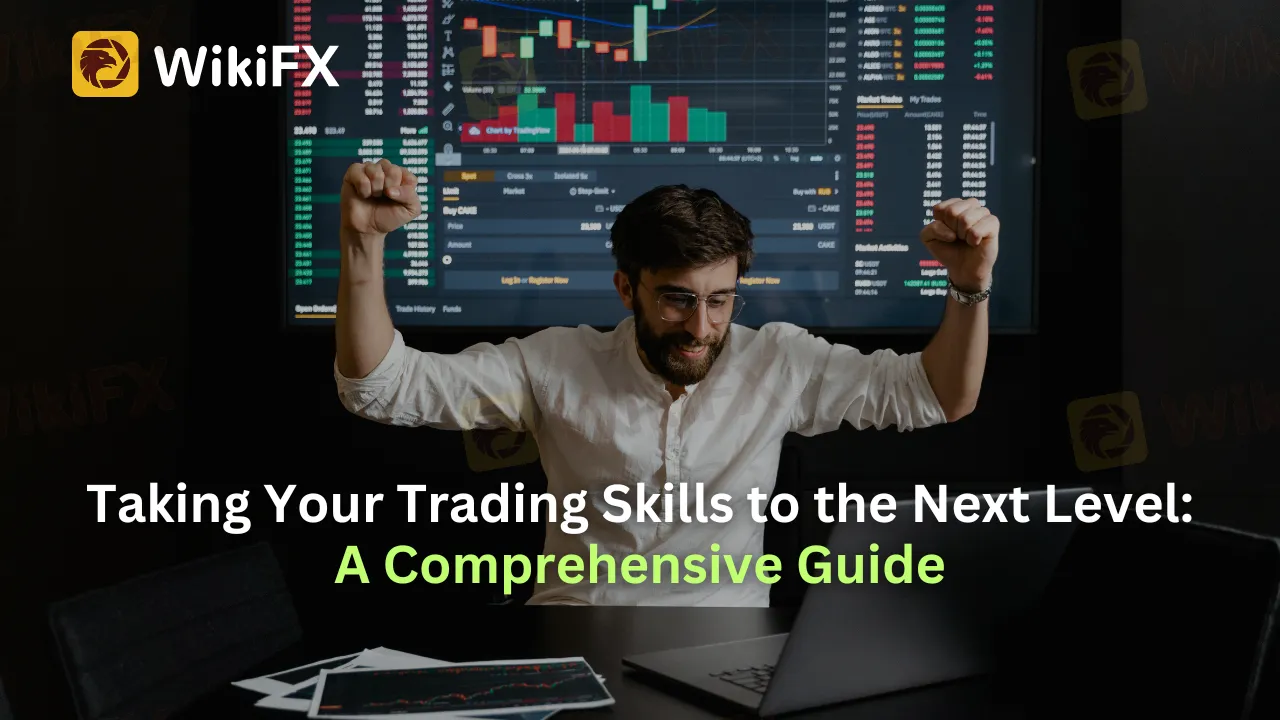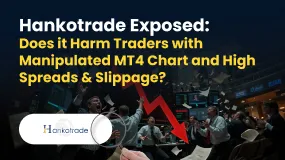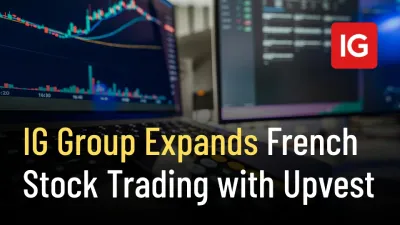简体中文
繁體中文
English
Pусский
日本語
ภาษาไทย
Tiếng Việt
Bahasa Indonesia
Español
हिन्दी
Filippiiniläinen
Français
Deutsch
Português
Türkçe
한국어
العربية
Taking Your Trading Skills to the Next Level: A Comprehensive Guide
Abstract:This article provides an in-depth exploration of advanced trading, covering technical and fundamental analysis, algorithmic and high-frequency trading, risk management, quantitative and behavioral finance, trading psychology, market structure, intermarket analysis, and performance analysis. It emphasizes continual learning and adaptability for successful trading.

The financial markets are a dynamic, ever-changing landscape. They require a diverse range of skills and disciplines to navigate effectively, particularly for those looking to trade at an advanced level. This article will explore several key topics and provide insights on how to level up your trading skills.
Advanced Technical Analysis
Technical analysis is a cornerstone of successful trading. It uses historical price patterns and statistical indicators to predict future market movements. The advanced technical analysis goes beyond basic patterns and indicators, incorporating more sophisticated tools such as Elliott Wave Theory, Ichimoku Clouds, and Fibonacci retracements. It involves understanding complex chart patterns, interrelations between different technical indicators, and managing false signals.
Algorithmic Trading
Algorithmic trading involves using computer programs to execute trades based on predefined criteria. It can significantly improve trading efficiency by eliminating human errors and emotional biases. Advanced algorithmic trading involves creating and backtesting complex trading strategies, using machine learning to adapt to changing market conditions, and managing the technical risks associated with high-speed trading systems.
High-Frequency Trading Strategies
High-Frequency Trading (HFT) involves executing trades in milliseconds using advanced algorithms. It requires substantial infrastructure, including high-speed data connections and proximity to exchanges. The strategies revolve around arbitrage, market-making, and statistical arbitrage. Despite the potential for high profits, HFT poses significant risks, including flash crashes and systemic instability.
Risk Management
Risk management is crucial in trading. Advanced risk management involves not just setting stop-loss orders, but understanding the statistical properties of your trading portfolio, such as Value-at-Risk (VaR) and Conditional Value-at-Risk (CVaR). It's about managing portfolio diversification, exposure to systemic risk, and tail risk – the risk of extreme market events.
Advanced Fundamental Analysis
Fundamental analysis involves evaluating a security's intrinsic value by examining related economic, financial, and other qualitative and quantitative factors. Advanced fundamental analysis includes understanding the implications of macroeconomic policies, interpreting complex financial statements, and assessing management quality and corporate governance. It can also involve using models like Discounted Cash Flow (DCF) to estimate intrinsic value.

Quantitative Analysis
Quantitative analysis uses mathematical and statistical modeling to understand and predict market behavior. It is a vital component of algorithmic trading and risk management. Advanced quantitative analysis involves understanding stochastic calculus, time-series analysis, and machine learning. It requires a strong foundation in mathematics and programming.
Behavioral Finance
Behavioral finance studies the effects of psychological factors on the financial markets. It helps to understand why markets may not always act efficiently. Advanced knowledge involves understanding cognitive biases like overconfidence and loss aversion, herd behavior in financial markets, and using this knowledge to better predict market movements.
Trading Psychology
Trading psychology refers to the emotions and mental state that affect trading success. It involves managing fear and greed, maintaining discipline, and dealing with losses. Advanced trading psychology is about developing mental resilience, understanding your own psychological biases, and using techniques like mindfulness to improve trading performance.
Market Structure and Microstructure
Market structure refers to the way a market is organized, including the number of participants, their roles, and the trading rules. Microstructure delves into the specifics of how trades occur and how prices are set. Understanding this can provide insights into liquidity, transaction costs, and price discovery, which can help refine trading strategies.
Intermarket Analysis
The Intermarket analysis involves examining the correlations between different asset classes, such as stocks, bonds, commodities, and currencies. It provides a more holistic view of the markets, which can help identify new trading opportunities and manage risk. For instance, a rise in oil prices may affect the stock prices of energy companies and the value of the dollar.
Performance Analysis
Performance analysis involves evaluating the effectiveness of your trading strategies over time. This is not just about calculating returns, but also about understanding risk-adjusted performance measures such as the Sharpe Ratio and the Sortino Ratio. The advanced performance analysis involves backtesting strategies on historical data, forward testing on out-of-sample data, and using Monte Carlo simulations to estimate the risk of different outcomes.
In conclusion, mastering the art of trading involves more than just understanding charts or financial news. It requires a comprehensive understanding of various disciplines, including technical and fundamental analysis, quantitative methods, psychology, and market structures. Each trader may find a unique combination of these skills and knowledge areas that work best for them. Ultimately, successful trading is about continual learning, disciplined risk management, and the ability to adapt to an ever-changing market environment.
Download and install the WikiFX App on your smartphone to stay updated on the latest news.
Download the App here: https://social1.onelink.me/QgET/px2b7i8n

Disclaimer:
The views in this article only represent the author's personal views, and do not constitute investment advice on this platform. This platform does not guarantee the accuracy, completeness and timeliness of the information in the article, and will not be liable for any loss caused by the use of or reliance on the information in the article.
Read more

Hankotrade Exposed: Does it Harm Traders with Manipulated MT4 Chart and High Spreads & Slippage?
Have you witnessed a manipulated MT4 chart on Hankotrade login, showing inaccurate trading figures? Have you been victimized by high swap fees, inflated spreads, and massive slippage? Is the payment processing time too long at Hankotrade? Do you face downtime issues, especially when the New York trading session is on? These are some top complaints against the Belize-based forex broker. In this article, we have shared these complaints. Take a look!

Cloudflare Outage Disrupts Broker Websites and Crypto Platforms
Cloudflare outage causes widespread disruption to broker websites and crypto platforms, highlighting risks in web infrastructure reliance.

Interactive Brokers Expands Access to Taipei Exchange
Interactive Brokers adds Taipei Exchange trading, giving clients access to equities, ETFs, and TDRs with seamless FX conversion and Asian market exposure.

IG Group Expands French Stock Trading with Upvest
IG Group partners with Upvest to launch stock and ETF trading in France, boosting its European expansion amid rising broker competition.
WikiFX Broker
Latest News
150 Years Of Data Destroy Democrat Dogma On Tariffs: Fed Study Finds They Lower, Not Raise, Inflation
FIBO Group Ltd Review 2025: Find out whether FIBO Group Is Legit or Scam?
Is INGOT Brokers Safe or Scam? Critical 2025 Safety Review & Red Flags
Trillium Financial Broker Exposed: Top Reasons Why Traders are Losing Trust Here
Amillex Withdrawal Problems
IEXS Review 2025: A Complete Expert Analysis
IEXS Regulation: A Complete Guide to Its Licenses and Safety Warnings
Oil and gas giant Wood plc sold to Dubai engineering firm
FONDEX Review: Do Traders Really Face Inflated Spreads & Withdrawal Issues?
【WikiEXPO Global Expert Interviews】Ashish Kumar Singh: Building a Responsible and Interoperable Web3
Currency Calculator




